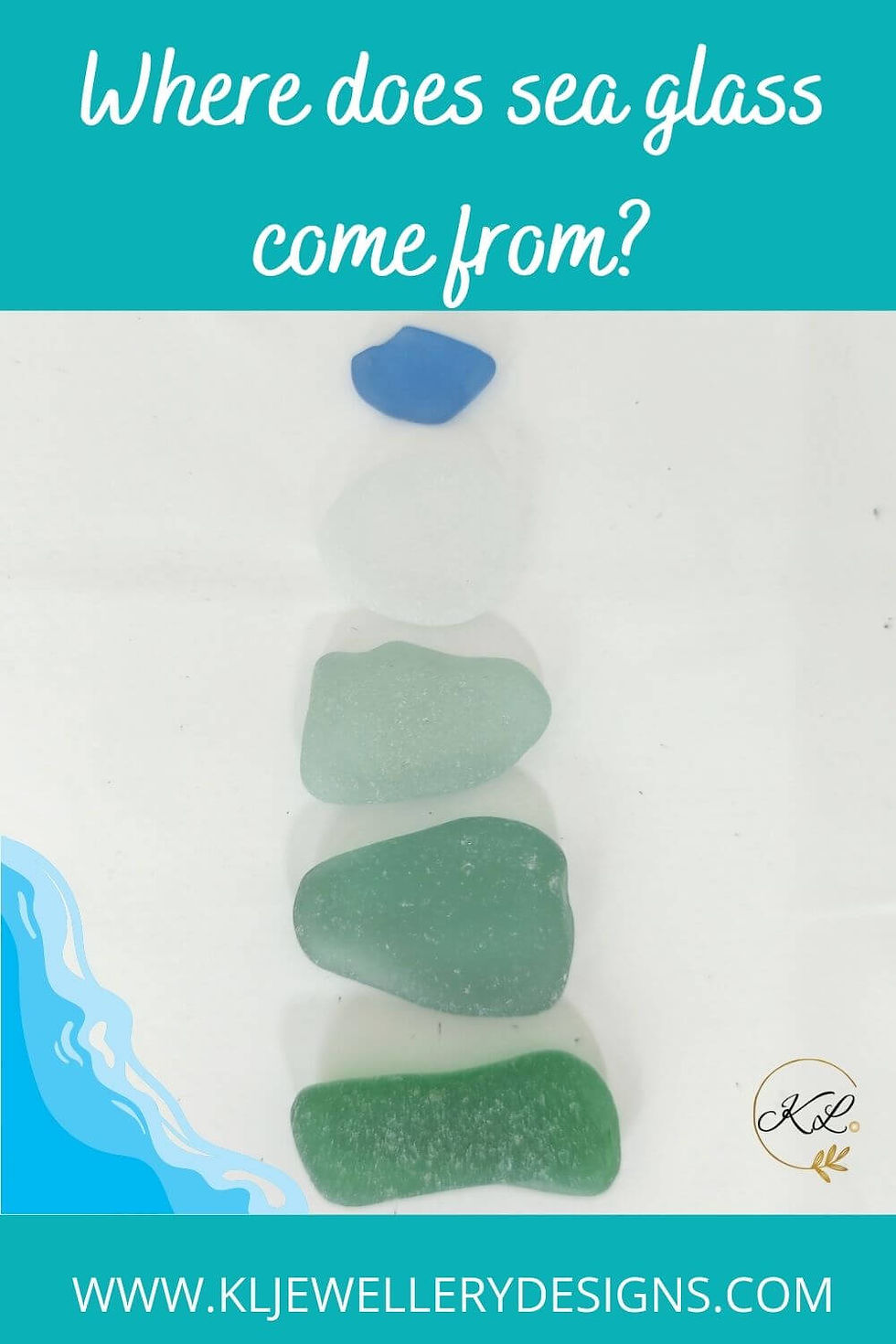Happy Monday my friends, we are now halfway through August and my books are starting to fill up with sea glass commissions. I love that sea glass can be found by us all, from a stroll along the beach and something catches your eye, that little sparkle of glass - exciting! Or being out adventuring with the kids and collecting treasure together. What ever the reason for keeping that bit of sea glass and turning it into jewellery it is a special one and worth keeping those memories alive every day.
Sea glass is such a conversation starter. People always want to know more and I love telling them. But there are some questions I get asked from my clients a lot and I wanted to share them all here for you too.....
Where does sea glass come from?
The sad truth is that sea glass is our rubbish. At a time when we know our planet is in great distress it is bittersweet. I love sea glass and I’m very grateful for it as it has brought me and my girlies closer together, we love going sea glass hunting, we are in competition to see who can find the most unusual colour and I won’t lie to you it sometimes brings out the worst in us lol but these are memories I know we will treasure forever. The girls are the reason I started making sea glass into jewellery, they kept asking and eventually one wet Sunday afternoon that’s what we did and haven’t looked back since. I’ve already said it is our rubbish that has made it’s way into the sea maybe from directly been dumped here to being washed out to sea and from ship wrecks. The glass is everything from bottles, jars, windows, car lights, TV screens, plates etc. The ocean does a great job at recycling the glass giving us the chance to reuse it and in doing so extending its life.
Why is sea glass frosted?
Glass once it hits the ocean gets tumbled in the waves. It can get broken up into smaller pieces if it hits rocks or other hard objects. From the moment it hits the waves it gets rolled around and mixes with sand and water, this is when it starts to become physically and chemically weathered, it changes shape and the edges become more rounded with the surface becoming frosted and smooth. It can take up to 20+ years to fully change a piece of glass into jewellery worthy sea glass. But not everyone likes the frosted look (the longer it has been rolling with the waves then the more frosted it will look), personally I love it but I can appreciate that a cleaner look may shine more therefore be a more interesting look, especially if you are wearing it as jewellery. If you rub your sea glass with a little bit of olive oil this removes the frosted appearance but fear not, if you find that you would rather have that frosted look after all, all you need to do is rub some surgical spirits on it or alcohol.
Can I alter the shape of the sea glass?
Yes, changing the shape of sea glass can be done using diamond files and diamond blades. Most people like to keep the sea glass piece as is when they find it. I understand this, as it is genuine and unaltered, if the sea glass holds a strong memory, then potentially changing the sea glass in any way will affect that memory. However sometimes people have a need for altering the shape for example two people may have found a special piece on a trip or outing and wish for the piece to be split between the two and put into matching jewellery, this could be for engagement/wedding rings or matching necklaces. The other advantage of shaping your own sea glass is that you get the shape that best fits your own personality and design style. I should point out that having regular shaped sea glass is unusual due to the nature of how the pieces are broken, tumbled and weathered, so if you see sea glass jewellery for sale that says it is genuine sea glass but has a regular shape like a circle then I would question this and ask have they altered the shape in any way. There is actually lots of fake sea glass out there as it is very popular and harder to find now due to the move from glass to plastic and also because we now are a lot better at disposing of waste and not using the ocean - thankfully!
Well I hope you learnt something today and enjoyed this little chat on sea glass. If you have any further questions don’t hesitate to pop it below in the comments.
I will be back next week with some more jewellery chat but if you can’t wait that long then why now follow my on social channels: IG click here, FB click here, and if you would like to be join my Facebook group called ‘For the love of jewellery with Katrina Lucas’ you can do so here. To be the first to find out about any new offers or collections then please do sign up to my newsletter (bottom of page), you get 10% off with your first purchase as a thank you.
Until next week, stay safe, keep communicating and always sparkle!
Katrina xx




Comments